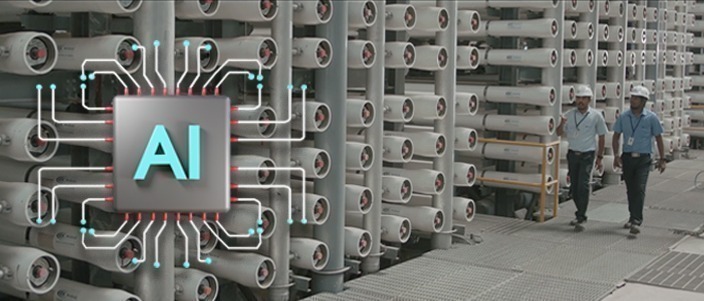Vacuum Membrane Distillation (VMD) Pilot Plant tests at IOCL, Panipat, India
01 October 2020 Submitted by Suraj Babu Pillai

Membrane Distillation is a thermal separation process during which only water vapour passes through a hydrophobic membrane. The driving force in the MD process is the difference in vapour pressure induced by vacuum and decrease in temperature across the membrane effects. This process finds its uses especially in desalination and industrial wastewater treatment with an ability to recover water from brine till saturation levels. MD pilot plant trials was started with the overall goal to develop a process to reach zero liquid discharge (ZLD). Consequently, WABAG applied the MD process with the goal to further increase the recovery ratio and to reduce the amount of water for further testing technologies like crystallization.
The pilot plant works with a process named Vacuum-Multi-Effect-Membrane Distillation (named V-MEMD) which combines the conventional Multi-Effect-Distillation with hydrophobic membranes. The process in the Pilot Plant initially involves pre-treatment in the mixing tank as shown in Figure 1 to remove silica and hardness. This is followed by the hot feed flowing to the membrane with different vapour pressures and temperatures forcing the evaporating vapour to pass through the membrane. Condensation occurs on the cooler side at the other end. Considerable reduction of the high saline water and production of demineralized water can be achieved with possibilities of operating the technologies for ZLD. Waste energy can be utilized since the process operates at low temperatures.

The pilot plant was operated in three modes: (i) Run through mode (ii) Batch mode with total brine re-circulation (iii) Feed & Bleed mode with partial brine recycle. The heating loop is operated at 65°C and the cooling loop at roughly 41°C or lower. The higher the temperature difference between the first and the last stage of the membrane racks, the higher the recovery rate. Due to the relatively low temperature difference between heating and cooling, distillate flow of the pilot plant was low. Higher recovery was achieved by batch and feed & bleed mode. In all three trials carried out so far the conductivity of the distillate was at a low level, indicating that no significant scaling of the membrane took place. Parallel lab tests helped verify the process efficiency. A fourth mode is being explored to treat the collected VMD brine as a batch to increase the TDS concentration till saturation levels in order to explore ZLD with crystallization as described before.







